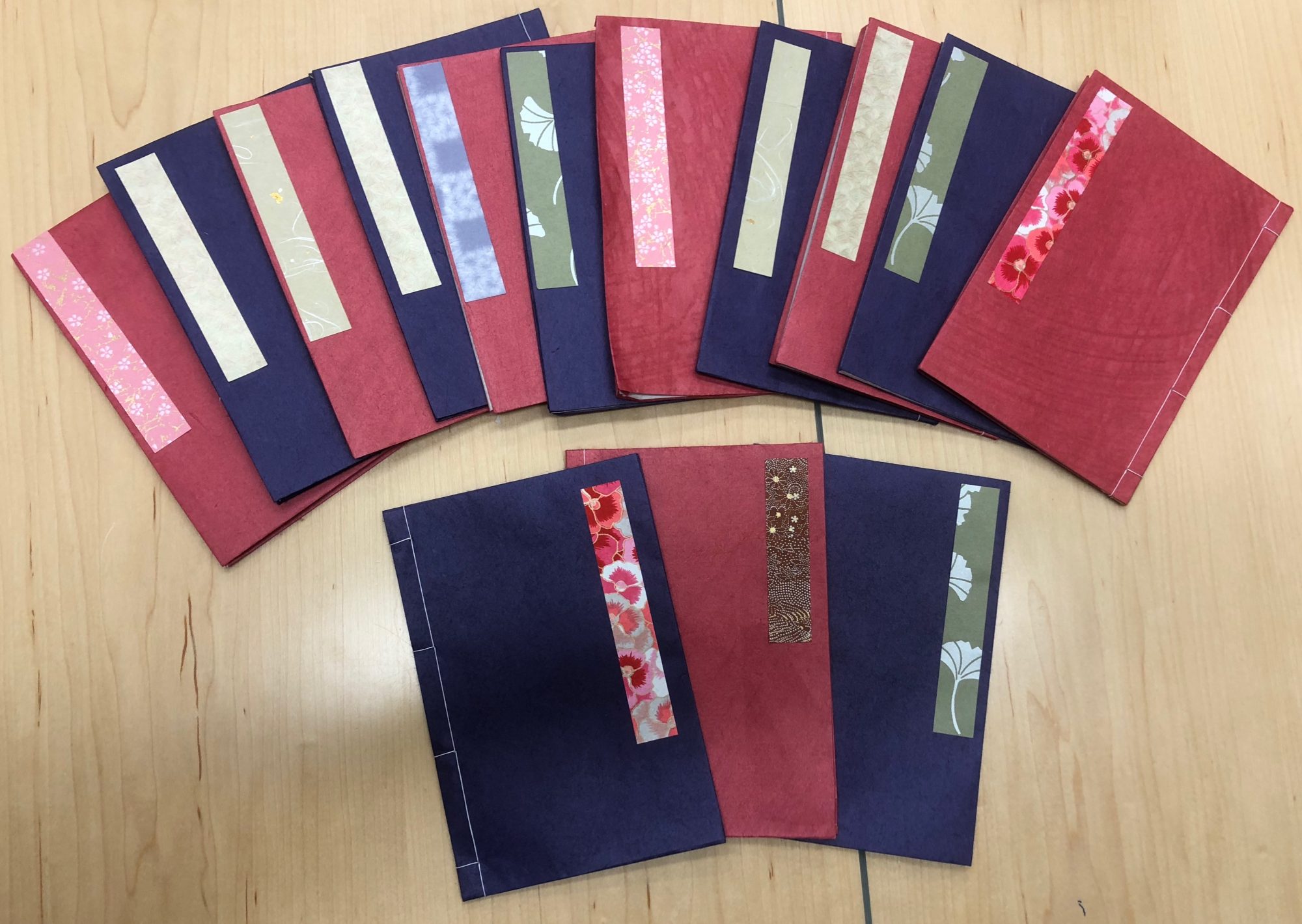Author: Chitoseen Fujihiko (千歲園藤彥)
Title: Itsukushima hengaku shukuhon (嚴島扁額縮本), Itsukushima ema kagami (嚴島絵馬鑑)[“Model of ema at Itsukushima island”]
Date: 1832 (天保三年)
Medium: Woodblock printed; ink and color on paper; paper covers
Description: 5 volumes, fukurotoji (pouch binding)
Publisher: Komeya Heisuke (米屋兵助)
Call Number: N7353 .I84 1832
Rare Book & Manuscript Library – Rare Book Collection
In Japanese shrines, wood panels painted by professional painters and commissioned by patrons are displayed above the doors of chambers. These are known as ema or hengaku. Large-scale ema, initially religious devotional objects, were later appreciated by public audiences as decorative pieces during the Edo period. Renowned painters often illustrated ema, presenting various pictorial themes and styles that encompassed warriors and immortals from Chinese and Japanese legends, sacred landscapes, and auspicious animals. These artworks not only exhibited the artistic skills of the painters but also reflected the social status of the patrons

Itsukushima Hengaku Shukuhon is a catalogue of large ema displayed in the Itsukushima Shrine, one of the most important Shinto shrines in Japan, situated on the island of Itsukushima near Hiroshima Bay. The book includes illustrations of ema, along with detailed information about the artists and their biographies, the size, color, and date of the paintings, their locations, the names of the patrons, and the subjects of these images, in a manner similar to a modern catalogue that we see today. These paintings were considered votive objects, and therefore their frames were also precisely illustrated. This copy is the first edition, published in 1832; selected illustrations were printed in color, while later editions were printed entirely in black and white.
Other copies of earlier edition could be found at Freer and Sackler Galleries, Yale University, and Stanford University. Copies of later editions could be found at Harvard University, UC Berkeley, Victoria and Albert Museum and Princeton University.
Selected Reading
Snow, Hilary Katherine. “Ema, Display Practices of Edo Period Votive Paintings.” Ph.D. diss., 2010.
Posted by Tim Zhang
April 9, 2018

